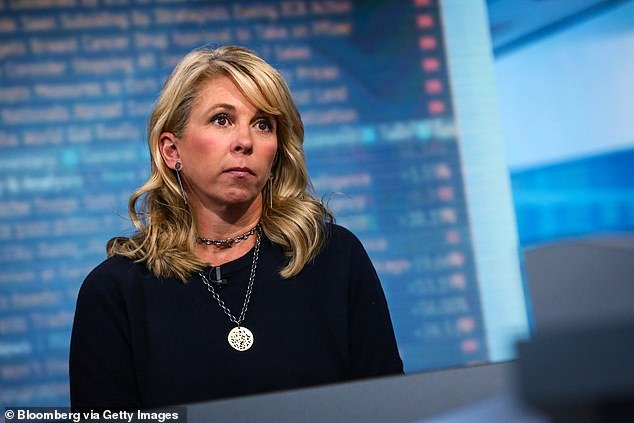Economists at Charles Schwab note that current market conditions are beginning to resemble 2021, the year before the most recent stock market decline.
The bank’s investment analysts warned that the widening disconnect between the underperformance of individual stocks and the rapid rise of indexes such as the S&P 500 was causing problems.
“If the weakness of the former and the strength of the latter continue into the future, this will start to eerily mimic what we saw in 2021,” Liz Ann Sonders, chief investment strategist at Charles Schwab for 24 years, said in a June 24 market commentary.
The surge in tech stocks has propelled both the S&P and Nasdaq to record highs, but as Saunders points out, most of the companies included in these two indexes don’t reflect the phenomenal performance of companies like Nvidia, which recently became the world’s most valuable company.
The percentage of stocks in the S&P 500 index that have risen over the past 50 trading days has plummeted from nearly 90% at the start of 2024 to around 50% today.

Liz Ann Sonders, chief investment strategist at Charles Schwab, has issued a warning to passive investors who are riding the historic rally in the S&P 500: The rally won’t last forever, and a bearish correction could be just around the corner.
“That’s exactly what happened in the second half of 2021, as in hindsight it sent the right signals that the market would no longer be able to sustain index levels, leading to a bear market in 2022,” Saunders wrote.
According to Forbes, the S&P has fallen 18.11% in 2022. The index really hit bottom at the end of September and has since risen more than 50% to date.
If the same scenario were to happen again in 2024 or 2025, Americans’ retirement accounts, many of which are heavily invested in tech-focused indexes like the S&P, could see a significant drop in their net worth.
Wall Street pros are also concerned about the dominance of big blue chip stocks over the entire market.
As of June 7, just three U.S. stocks — Microsoft, Nvidia, and Apple — accounted for more than 20% of the S&P’s value for the first time since 2000, MarketWatch reported.
The year 2000 was a key year as it was the collapse of the dot-com bubble, resulting in the loss of $5 trillion in wealth.
That means that even if just one of these companies (and we’d be crossing our fingers that all three would end up in the red), it could cause one of the world’s largest stock indexes to plummet and wipe out years of savings for millions of Americans.
In recent weeks, leading bankers and even the former CEO of a major retailer have issued dire warnings about the U.S. economy.
In May, Jamie Dimon, chairman of JPMorgan Chase, the world’s largest bank, said: The worst outcome is U.S. Economy That would be “stagflation.”
this is inflation It continues to rise, but unemployment is high and growth is slowing.
Economists believe stagflation, last seen in the United States in the 1970s, would be worse than a recession: it would cause stock prices to fall and hit 401(k) plans and other retirement savings.
Other economists, including Sam Stovall, chief investment strategist at CFRA Research, have said stocks won’t keep rising, or at least will need to correct before rising again.
“I am increasingly concerned that we may have to endure another 5 percent or more decline before the end of the year,” Stovall said in June.

The last time three stocks made up more than 20% of the S&P 500 was in 2000, when the dot-com bubble burst and wiped out trillions of dollars of wealth.
Others are predicting a massive economic downturn, potentially bigger than the 2007-2008 financial crisis.
Meanwhile, Bob Nardelli, CEO of one of America’s largest retailers, issued a stern warning that fault lines in the US economy were “on the brink of breaking”.
The former president of Home Depot and Chrysler said the Biden administration’s policy missteps could create major challenges for the next president.
“What I’ve seen over the last three and a half years is a series of debacles and missteps that have put enormous pressure on the fault lines of our economy that are on the verge of crumbling,” Nardelli said.
“So there are going to be some tough times ahead.”

